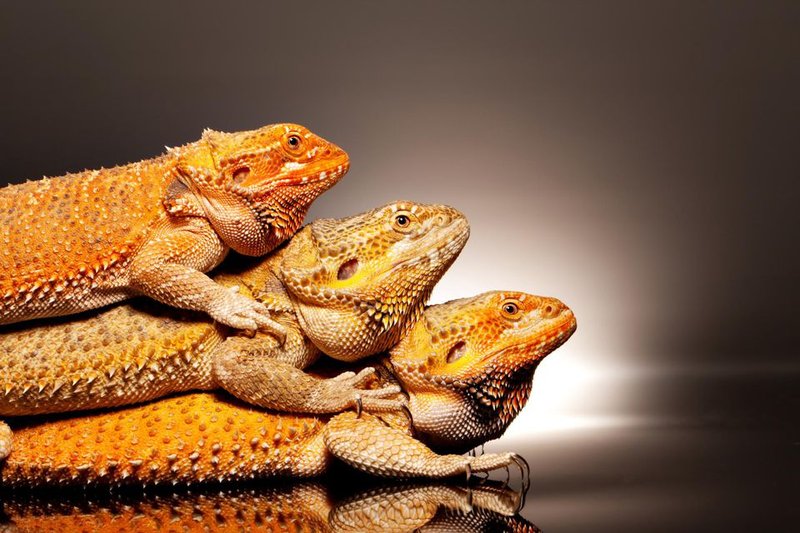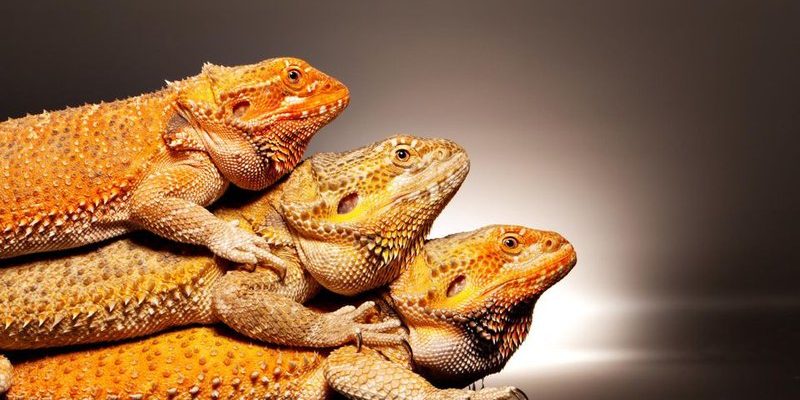
Here’s the deal: not all reptiles are as easygoing as bearded dragons. They have specific needs, behaviors, and temperaments that don’t always mesh well with other species. So, can bearded dragons live peacefully with other reptiles? Let’s dig into the details, and I’ll help you understand the ins and outs of mixing these fascinating creatures.
Understanding Bearded Dragons
Bearded dragons, or *Pogona vitticeps*, are native to Australia. They thrive in warm, dry environments and love to bask in the sun. Their friendly nature makes them popular pets, and they can even recognize their owners! But before you think about introducing another reptile into their habitat, it’s crucial to understand their basic characteristics.
These lizards are known for their distinctive beard of spiky scales that puff out when they’re upset or trying to assert dominance. They are diurnal, meaning they’re active during the day, which can influence how they interact with other reptiles. Their social behavior is typically calm, but they also can be territorial, especially if they feel their territory is threatened.
It’s essential to ensure your bearded dragon is healthy and well-adjusted before considering any housemates. Stress from other reptiles can lead to health issues, so let’s explore how to make this decision carefully.
Can Bearded Dragons Live With Other Lizards?
You might be thinking, “What about other lizards? Surely they’d get along!” Well, here’s the thing: introducing another lizard species into your bearded dragon’s home isn’t straightforward. Some lizards have vastly different needs, and their temperaments can clash.
For example, a leopard gecko, which hails from a much different environment, might not thrive in the same conditions as a bearded dragon. Leopard geckos require lower temperatures and more humidity—conditions that could stress your bearded dragon. The difference in habitat needs is just the tip of the iceberg.
In terms of social behavior, many lizard species, like the blue-tongue skink, can be territorial as well. So, if you decide to keep these two together, be prepared for potential skirmishes. When it comes to mixing reptiles, it’s often best to stick with reptiles that have similar environmental and social requirements.
What About Snakes and Turtles?
Now, you might wonder how other reptiles, like snakes or turtles, fit into this picture. While it might seem like a great idea to house various reptiles together, it’s generally not safe or advisable. Snakes and bearded dragons don’t share common habitats, and their dietary needs are worlds apart.
For instance, snakes are carnivorous and rely on a diet of live or frozen prey, while bearded dragons are omnivores, enjoying a mix of insects and vegetables. This difference means that when mixed together, there could be food aggression or stress.
Turtles are another story. They might look calm and composed, but their water requirements and habitat needs can differ significantly from those of a bearded dragon. Plus, turtles can harbor bacteria that could be harmful to your lizard. So, while they may appear peaceful, it’s usually best to keep these critters in their own separate environments.
Stress and Health Concerns
You might be wondering why the potential stress of cohabitation is such a big deal. Well, reptiles are pretty sensitive to their environments, and stress can have serious health repercussions. When a bearded dragon feels threatened by another animal, it can lead to behaviors like hiding, reduced appetite, and overall poor health.
Stress can also weaken their immune system, making them more prone to infections. If you notice your bearded dragon acting differently—like being less active or refusing food—it might be time to reconsider your setup. Your lizard’s well-being should always come first, and separate habitats often create a happier, healthier pet.
Creating a Safe Habitat
If you’re committed to introducing another reptile, it’s vital to create a proper habitat. Ideally, this would be a completely separate enclosure that mimics their natural environment. For bearded dragons, this means providing heat lamps, UVB lighting, and appropriate substrate to dig in.
When setting up a new enclosure for your other reptile, consider the following:
- Temperature: Different reptiles have different heat needs, so be sure to research what’s best.
- Humidity: Some reptiles, like tropical species, require higher humidity, which is not suitable for bearded dragons.
- Space: Ensure there’s enough room for each reptile to establish its territory.
By keeping habitats separate, you give each reptile the chance to thrive without added stress. It’s all about creating the ideal conditions for your pets to be happy and healthy.
Alternatives to Cohabitation
Instead of mixing reptiles, there are many ways to ensure your bearded dragon has companionship and stimulation without compromising their health. You could consider:
- Interactive play: Spend time handling your bearded dragon and letting them explore outside their enclosure.
- Enrichment: Add fun elements to their habitat, like climbing structures, hiding spots, and safe plants.
- Feeding time: Use varied diets and feeding techniques to make mealtime exciting.
These alternatives can enhance your pet’s life without the risks that come with cohabitating with other reptiles.
In the end, while the idea of mixing bearded dragons with other reptiles might be tempting, it’s usually not the best option. Different species have specific needs and behaviors that make cohabitation challenging at best and dangerous at worst. By understanding their requirements and recognizing the potential risks, you can ensure your bearded dragon lives a happy, stress-free life.
Keep in mind that reptile care is all about creating a safe, nurturing environment. If you’re ever unsure, it’s worth consulting with a veterinarian who specializes in reptiles. Your bearded dragon deserves the best, and knowing how to protect their health and happiness is key.

